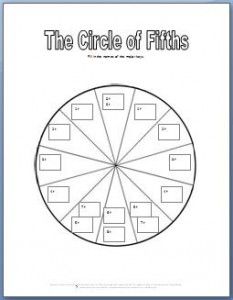Your cart is currently empty!
irrelevant cost does not include: Com 317 Chapter 12 Relevant costs for Decision Making Flashcards
Содержание

The relevant cost of the material available in stock is its scrap value of $1,000. Calculate the relevant cost for the order and the price RTC should quote. If the rubber is not used on this order, it will have to scraped at a price of $1,000.
Relevant costing attempts to determine the objective cost of a business decision. An objective measure of the cost of a business decision is the extent of cash outflows that shall result from its implementation. Relevant costing focuses on just that and ignores other costs which do not affect the future cash flows.
Trio of election bills considered – Unicameral Update – Unicameral Update
Trio of election bills considered – Unicameral Update.
Posted: Thu, 02 Mar 2023 20:02:09 GMT [source]
Future costs that cannot be avoided are not relevant because they will be incurred irrespective of the business decision bieng considered. The underlying principles of relevant costing are fairly simple and you can probably relate them to your personal experiences involving financial decisions. Non-cash expenses same as depreciation and amortization are not categorized as relevant as they do not impact the cash flows of a company. Relevant costs are only the costs that will be affected by the specific management decision being considered. A.) The depreciation of the old machine, $5,000, is irrelevant since the company will continue to depreciate the machine until the end of its useful life. Whether the company purchases the new equipment or not, it will still incur the $5,000 depreciation.
Relevant costs
Because these costs have already been incurred, they are “sunk costs” or irrelevant costs. Examples of irrelevant costs are fixed overheads, notional costs, sunk costs and book values.The gamut is wider for irrelevant costs. Sunk cost are costs incurred in past whereas irrelevant cost are costs which are not relevant in decision making.
The customer indicated interest to buy the product that the materials would be used to produce at $2,000 per unit. It will cost the company $1,600 to convert the materials to the product required by the customer. The relevant cost and revenue are respectively $1,600 and $2,000 per unit . Relevant costs are affected by management decisions while irrelevant costs are not influenced by these decisions. Explore relevant and irrelevant costs in accounting, and learn about their definitions and examples.

Using a straight line irrelevant cost does not include method, the written down value over its useful life is $40,000. The figure has to be written off, no matter what possible alternative course of action might be chosen in future. Please note that whether the equipment is scrapped or used for production purposes, the $40,000 would still be written off. This cost cannot be changed as a result of future decision and hence is regarded as sunk cost and is irrelevant in decision making.
Examples of Irrelevant Costs
Fixed costs are irrelevant assuming that the decision at hand does not involve doing anything that would change these stationary costs. \nGenerally speaking, most variable costs are relevant because they depend on which alternative is selected. Not every cost is important to every decision a manager needs to make; hence, the distinction between relevant and irrelevant costs. As a bookkeeper, you need to track the relevant costs and expose the irrelevant ones for appropriate future decision making.
Celebrities Are Getting Full Body MRIs — Should You? HealthNews – Healthnews.com
Celebrities Are Getting Full Body MRIs — Should You? HealthNews.
Posted: Tue, 28 Feb 2023 18:29:43 GMT [source]
The relevant costs in this decision are the variable costs incurred by the manufacturer to make the wood cabinets and the price paid to the outside vendor. If the vendor can provide the component part at a lower cost, the furniture manufacturer outsources the work. Let’s return to our earlier example with your doll-making business.
Material – if the buy-in option is accepted, the material cost increases from $12 to $15 per unit. The closure of Production Line A would also result in the revenue lost being greater than the value of the costs saved, so this isn’t a good idea either. The material is regularly used in current manufacturing operations. Both costs also help to determine the total cost of operations.
Relevant Cost of Decisions
For example, say that you want to https://1investing.in/ the number of books that your business produces next year in order to increase your sales revenue, but the cost of paper has just shot up. Absolutely — that cost will affect your bottom-line profit and may negate any increase in sales volume that you experience . \nFor example, say that you want to increase the number of books that your business produces next year in order to increase your sales revenue, but the cost of paper has just shot up. Something committed contractually is effectively a sunk-cost and thus is an irrelevant cost for the decision making process under germane consideration.

It is important to remember that, though a cost may irrelevant for one management decision, it may be relevant for other management decisions. Irrelevant costs are the costs that are not affected by making a business decision since they do not affect the future cash flows. Irrespective of whether the decision is made or not, these costs will have to be incurred.
Relevant versus Irrelevant Costs
Assume that a department in the University of California is considering the financial implications of 25 percent increase in the students population. The difference in costs (i.e. the differential cost) between the two alternatives of no increase in the number of students 25 percent increase in the number of students is $190,000. It should be noted that differential costs could or could not include fixed costs. If fixed costs change as a result of decision, the increase in costs represents a differential cost. If fixed costs do not change as a result of a decision the differential cost is zero. Sunk costs include historical costs that have been taken up or paid by the company, hence will not be affected by future decisions.
Relevant cost is a managerial accounting term that describes avoidable costs that are incurred only when making specific business decisions. The concept of relevant cost is used to eliminate unnecessary data that could complicate the decision-making process. As an example, relevant cost is used to determine whether to sell or keep a business unit.
- However, irrelevant costs can not be changed, and mistaking an irrelevant cost will wrongly inflate relevant costs.
- Hence, the fixed cost which represents salary of factory supervisor will change.
- A one-time sale that is not considered part of the company’s normal ongoing business is referred to as a__________ _________ decision.
- There is currently 800 hours of idle time available and any additional hours would be fulfilled by temporary staff that would be paid at $14/hour.
- Since an irrelevant cost does not impact a managerial decision, in all likelihood the cost will not change that decision.
- For example, when deciding to purchase a necessary product for a business, adding any costs will increase overall expenses for this business decision.
Coming costs, which must not be changed, are not relevant as they will have to be endured regardless of the decision took. The emphasis laid on future is because every decision is based on selection of courses of action for the future. For example, suppose that your supervisor tells you to expect a slew of new hires next week. All your staff members use computers now, but you have a bunch of typewriters gathering dust in the supply room.
Relevant costs are costs that will be affected by a managerial decision. As supervisor’s salary is a fixed cost unchanged by the work performed on this order, it is a non-relevant cost. Cash expense that will be incurred in the future as a result of a decision is a relevant cost. • Conventionally prepared depreciation is not a differential cost and therefore irrelevant. Incremental analysis is a decision-making technique used in business to determine the true cost difference between alternatives. However, let’s say that the adverting supervisor would be responsible for developing an advertising campaign that tells the public how much more durable machine-made dolls are compared to the hand-sewn dolls.
Fixed overhead and sunk costs are examples of irrelevant costs. For instance, the book value of a company’s equipment and machinery cannot change regardless of the managerial decision that is reached. Formal documentation of irrelevant costs is important, these costs are likely to be ignored when reaching decisions but they must be accurately documented. Also, it is important to note that it is possible for an irrelevant cost in a managerial decision to be a relevant cost in another managerial decision. A relevant cost is any cost that can be deemed avoidable only when making specific business decisions. When any business decision is being made, the costs incurred afterward are relevant costs.
Committed costs are also usually considered irrelevant, since these are future costs for which the firm has made a firm commitment that cannot be abrogated. Relevant costs should be considered before making a decision, not afterward. In the case of deciding if a business needs to be closed down or not, the business owner would have to inspect if relevant costs will yield a relevant profit after subtracting from business revenues.

Relevant costs, as the name suggests, are the cost that is affected by the decision that the company or manager takes. On the other hand, managerial choices do not affect irrelevant costs. Since irrelevant costs remain unaffected by a decision, businesses often ignore these costs. Cost data is important since they are the basis in making decisions that are geared towards maximizing profit, or attaining company objectives.
A company makes a product which requires two sequential operations on the same machine. Cost of machine – this is a relevant cost as $2.1m has to be paid out. As the relevant cost is a net cash outflow, the machine should be sold rather than retained, updated and used. The material has no use in the company other than for the project under consideration. For example, if a company has two year lease for piece of machinery, that cost will not be relevant to a decision on whether to use that machinery on a new project which will last for the next month.
Leave a Reply